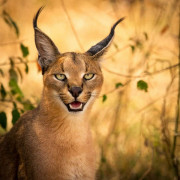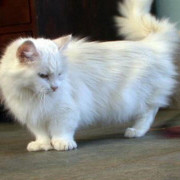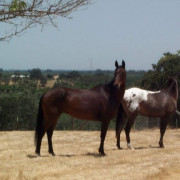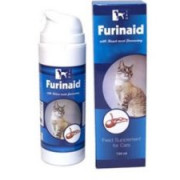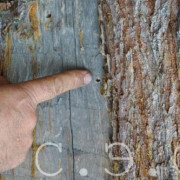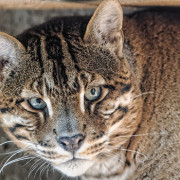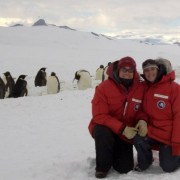Ютараптор
References
- ^
- ^
- Kirkland, J.I. and Madsen, S.K. (2007). «The Lower Cretaceous Cedar Mountain Formation, eastern Utah: the view up an always interesting learning curve.» Fieldtrip Guidebook, Geological Society of America, Rocky Mountain Section. 1-108 p.
- ^
- Rothschild, B., Tanke, D. H., and Ford, T. L., 2001, Theropod stress fractures and tendon avulsions as a clue to activity: In: Mesozoic Vertebrate Life, edited by Tanke, D. H., and Carpenter, K., Indiana University Press, p. 331-336.
- Paul, Gregory S. (2016). The Princeton Field Guide to Dinosaurs (2nd Edition). Princeton, New Jersey: Princeton University Press. p. 151. ISBN .
- Paul, Gregory S. (2016). The Princeton Field Guide to Dinosaurs (2nd Edition). Princeton, New Jersey: Princeton University Press. pp. 151, 163, 229, 252, 314, 319, 326, 327. ISBN .
- Kirkland, J.I. (December 1, 2016). «The Lower Cretaceous in East-Central Utah—The Cedar Mountain Formation and its Bounding Strata». Geology of the Intermoutain West. 3: 1–130.
- Kanipe, Jeff (February 1996). «Dino Redux». Earth. 5 (1): 66–68.
- Naughton, John (September 5, 1995). «At home with a Jurassic monster». The Times.
- Chander, David (November 13, 1995). «In his field, Robert Bakker walks alone». Boston Globe. p. 29.
- Johnson, Eric (September 1995). «Book Reviews: Fiction». Library Journal. 120 (14): 205.
- Dinosaurs portal
- Cretaceous portal
- United States portal
Paleobiology
Cast of the foot bones, Dinosaur Museum Aathal
According to the authors of its description, Utahraptor had an important ecological role as a major carnivore of the fauna of the present-day Arks region in the early Cretaceous», and could probably attack prey larger than itself. Group hunting of individuals of at least 3.5 m and 70 kg, if proven, could have killed 8 m prey of a weight of one to two tonnes. According to paleontologist Gregory S. Paul, Utahraptor was not particularly fast and would have been an ambush hunter that preyed on large dinosaurs such as the contemporary iguanodontians and therizinosauroids it shared its environment with. Its robust build and large sickle claw indicates it was well suited to hunting such prey. Like other dromaeosaurine dromaeosaurids, it may have also relied heavily on its jaws to dispatch prey—more so than other types of dromaeosaurids, such as velociraptorines.
Биология
До открытия ютараптора считалось, что были мелкими животными, достигавшими не более 2-3 метров в длину. Однако при обнаружении ютараптора выяснилось, что существовали и исключения из этого правила. Его длина была оценена в 5 метров на основе пропорций дейнониха, а масса — не менее чем в 500 кг. В дальнейшем выяснилось, что это было очень массивное и коренастое животное с относительно крупной головой и совершенно другими пропорциями. В действительности ютараптор скорее всего был около 5 метров длиной, но весил столько же или даже больше, чем при старой реконструкции.
Как и все дромеозавриды, ютараптор имел на втором пальце каждой из задних лап огромный серповидный коготь, который, однако, едва ли служил ему оружием в силу биомеханических ограничений. Филогенетический анализ показал, что скорее всего он был покрыт перьями. Как и для других дромеозавридов, не существует никаких фактических доказательств группового поведения ютарапторов, вопреки популярности этого предположения в СМИ.
Ближайший из известных родственников ютараптора — дромеозавриды (Dromaeosaurus) из верхнего мела Северной Америки и (Achillobator giganticus) из верхнего мела .
Description
Size of the largest-known individual of Utahraptor, compared with a human
The holotype specimen of Utahraptor is fragmentary, consisting of skull fragments, a tibia, claws and some caudal (tail) vertebrae. These few elements suggest an animal about twice the length of Deinonychus. Like other dromaeosaurids, Utahraptor had large curved claws on their second toes. One claw specimen is preserved at 22 centimeters (8.7 in) in length and is thought to reach 24 cm (9.4 in) restored.
The largest described U. ostrommaysi specimens are estimated to have reached up to 7 meters (23 ft) long and somewhat less than 500 kilograms (1,100 lb) in weight, comparable to a grizzly bear or polar bear in size.
However, the 2001 Kirkland discovery indicates the species may be far heavier than previously estimated.
It is thought that Utahraptor is closely related to the smaller Dromaeosaurus and the giant Mongolian and North American dromaeosaurid genera Achillobator and Dakotaraptor, based on cladistic analysis.
Life restoration by Emily Willoughby, 2014
Although feathers have never been found in association with Utahraptor specimens, there is strong phylogenetic evidence suggesting that all dromaeosaurids possessed them. This evidence comes from phylogenetic bracketing, which allows paleontologists to infer traits that exist in a clade based on the existence of that trait in a more basal form. The genus Microraptor is one of the oldest-known dromaeosaurids, and is phylogenetically more primitive than Utahraptor. Since Microraptor and other dromaeosaurids possessed feathers, it is reasonable to assume that this trait was present in all of Dromaeosauridae. Feathers were very unlikely to have evolved more than once, so assuming that any given dromaeosaurid, such as Utahraptor, lacked feathers would require positive evidence that they did not have them. So far, there is nothing to suggest that feathers were lost in larger, more derived species of dromaeosaurs.
In a 2001 study conducted by Bruce Rothschild and other paleontologists, two foot bones referred to Utahraptor were examined for signs of stress fracture, but none were found.
Discovery
Claw bone, BYU Museum of Paleontology
Restored hip bone
The first specimens of Utahraptor were found in 1975 by Jim Jensen in the Dalton Wells Quarry in east-central Utah, near the town of Moab, but did not receive much attention. After a find of a large foot-claw by Carl Limoni in October 1991, James Kirkland, Robert Gaston, and Donald Burge uncovered further remains of Utahraptor in 1991 in the Gaston Quarry in Grand County, Utah, within the Yellow Cat and Poison Strip members of the Cedar Mountain Formation. Radiometric dating has shown that these parts of the Cedar Mountain Formation were deposited about 124 million years ago. The type specimen, CEU 184v.86, is currently housed at the College of Eastern Utah Prehistoric Museum, although Brigham Young University, the depository of Jensen’s finds, currently houses the largest collection of Utahraptor fossils.
The type species (and only known species of Utahraptor), Utahraptor ostrommaysi, was named by Kirkland, Gaston, and Burge in June 1993 for the American paleontologist John Ostrom from Yale University’s Peabody Museum of Natural History, and Chris Mays of Dinamation International. Earlier, it had been intended to name the species «Utahraptor spielbergi» after film director Steven Spielberg, in exchange for funding paleontological research, but no agreement could be reached on the amount of financial assistance.
Premaxilla, BYU
In 2001, Kirkland et al, pursued a graduate student’s discovery of a bone protruding from a 9-ton fossil block of sandstone in eastern Utah. It was determined to contain the bones of at least seven individuals, including an adult measuring about 4.8 m (16 ft), four juveniles and a hatchling about 1 m (3.3 ft) long. Also fossilized with the predators are the remains of at least one possible iguanodont herbivore.
Kirkland speculated that the Utahraptors attempted to scavenge carrion or attack helpless prey mired in quicksand, and were themselves mired in the attempt to attack the herbivore. Similar sites such as the Cleveland-Lloyd Quarry and California’s La Brea Tar Pits house such predator traps. Examination of the fossils are ongoing after a decade of excavation, but if Kirkland is correct, it may be one of the best preserved predator traps ever discovered. The fossils may further reveal aspects into the behavior of Utahraptor, such as whether it might have hunted in groups like Deinonychus is believed to have done. Whether all the Utahraptor individuals were mired simultaneously or were drawn in, one-by-one, is unclear, as work is currently slowed on the specimens. More concrete answers may yet come to light once crowdfunding efforts to employ professional excavator, Utahraptor Project leader Scott Madsen, are completed.
История открытия
Впервые ископаемые остатки ютараптора были обнаружены палеонтологами Джеймсом Киркландом, Робом Гастоном и Доном Бургом в округе Гранд Каунти (формация Cedar Mountain) штата . Находке дали имя «ютараптор» в . Найденные остатки хранились в музее доисторической жизни при Колледже землеведения в Юте.
В знаменитые американские палеонтологи Джон Остром и Крис Мейс официально утвердили название «ютараптор» и описали динозавра как Utahraptor ostrommaysi.
На данный момент первый и единственный скелет ютараптора смонтирован в музее доисторической жизни в Юте, а его статуя встречает посетителей на входе в музей. В 2013 году статуя была похищена и через несколько дней найдена и возвращена в музей.
Paleoecology
Utahraptor compared to contemporaneous fauna (Yellow Cat and Poison Strip Members) from the Cedar Mountain Formation (Utahraptor in dark red)
Utahraptor lived in the lower part of the Cedar Mountain Formation, which during the Barremian was a semiarid area with floodplain prairies, riverine forests, and open woodlands. There is believed to have been a short wet season. Other fauna that were contemporaneous with the dromaeosaurid in the Yellow Cat and Poison Strip Members included the therizinosaurs Falcarius and Martharaptor, the sauropods Cedarosaurus, Mierasaurus, Venenosaurus and Moabosaurus, the iguanodonts Iguanacolossus, Planicoxa, Cedrorestes and Hippodraco, and the ankylosaur Gastonia. The dromaeosaurid Yurgovuchia, the troodontid Geminiraptor and the ornithomimosaur Nedcolbertia also dwelled here. Birds, fish, mammals such as Cifelliodon, turtles, crocodiles, and pterosaurs are also known from the formation, creating a diverse fauna.

